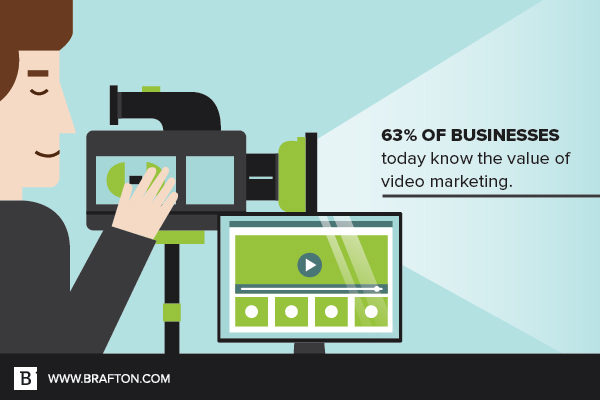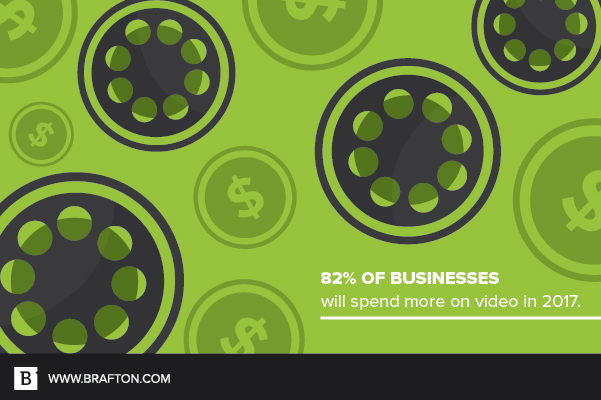What happens when you combine video and social media? The answer is strong engagement with massive reach.
Proven strength meets wide range
According to The State of Video Marketing 2017 from Wyzowl, 79 percent of consumers would opt for watching a video about a product over reading text. An even higher number of consumers (84 percent) reported making a purchase after watching a brand’s video.
Video hasn’t just proven to be an effective conversion tool, but a traffic generator as well. Seventy-six percent of businesses cited video has helping to increase website visitors.
All told, 63 percent of modern businesses are using video for marketing purposes, and 82 percent will spend more on it in 2017.

As far as how businesses plan to use video in the year ahead, they are investing in:
- Webinars (58) percent.
- Facebook (49 percent).
- Interactive video (43 percent).
- Instagram (42 percent).
- 360-degree video (31 percent).
- Snapchat (27 percent).
- Virtual reality (17 percent).
While Facebook came in second, it was one of three separate social media channels on the list. Along with Instagram and Snapchat, the focus on Facebook as a cornerstone of video marketing shows businesses are taking notice of the inherent benefits of combining social with the audience engagement and conversion opportunities associated with video.
By 2020, approximately a third of our planet’s population will be using some form of social media, according to Statista. As of right now, the region boasting the highest penetration rate of social networks is North America. Sixty percent of North Americans have at least one social account. When you drill down to the U.S. specifically, that number rises to 78 percent.
However, as with all content marketing strategies, there is a right way and wrong way to share videos. Knowing the difference will separate successful campaigns from failures.

DO consider the platform
The term “social media” encompasses a wide range of platforms, and each one has its own unique audience and usage metrics to consider.
“Make sure that the video you are sharing is relevant to each platform,” said Erin Hancock, Associate Manager of Promotions and Engagement at Brafton. “If you are sharing a long, technical video on Facebook, it’s unlikely it will get as many likes and shares as a fun video showcasing your company’s culture. It’s essential to know the nature of each platform and understand your audience before you start sharing.”
For instance, while Facebook and Twitter can be excellent platforms for business-to-consumer videos, LinkedIn is the platform of choice for business-to-business organizations. You should research the demographics that use certain social media platforms, targeting your efforts based on metrics like age and income.
DON’T go on too long
Conciseness is key for sharing video on social media.
“When sharing a video on social, make sure to keep it short,” Erin said. “People who are browsing social media are more likely to watch your whole video if it’s not too much of an investment of their time. Try to capture the attention of your audience within the first few seconds of your video.”
If in doubt, cut down for time. A minute-long video is the sweet spot.
-
DO keep timing in mind
Beyond the length of video, time considerations extend to when you choose to publish the video. Time of day, day of week and season will all affect who’s watching and how impactful the content is.
Posting a video when more people have unplugged from social media, such as late at night or during a holiday period, is a recipe for disappointment.
“As far as days to avoid sharing videos, keep in mind the different holidays or specific days of remembrance when it may not be appropriate to share certain things,” Erin said. “For example, on Christmas, you should be sharing a holiday-themed post and not a video about your products.”
DON’T settle for status quo
If you find success with one video campaign, it can be tempting to try to repeat it over and over again. However, audiences will quickly become bored if your content is always the same.
Switch it up by incorporating all the various types of video content available to you, such as:
- In-studio video blogs.
- On-location interviews.
- Event coverage.
- Vox pops.
- Product demonstrations.
- Explainer videos.
- Commercials.
Curious to see these video options in action? Check out some of the work we’ve done for our clients.





